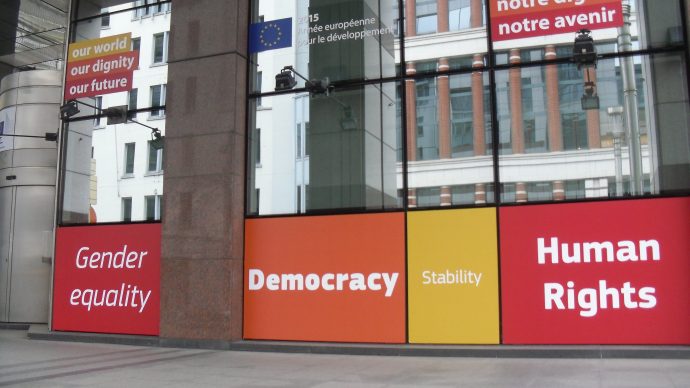New figures confirm the EU and its Member States have kept their place as the world's leading aid donor in 2015, writes the European Commission in a press release Wednesday.
The European Union and its Member States have again kept their place as the world's leading aid donor in 2015, providing more than half of the total Official Development Assistance (ODA) reported last year by members of the Development Assistance Committee of the Organisation for Economic Co-Operation and Development (OECD-DAC), according to the figures published today.
Preliminary figures show that EU collective (EU institutions and Member States) Official Development Assistance has increased to €68 billion in 2015 (up 15% from €59 billion in 2014) – growing for the third year in a row (and reaching its highest level to date).
EU collective ODA represented 0.47% of EU Gross National Income (GNI) in 2015, an increase from 0.43% in 2014. This is significantly above the non-EU Development Assistance Committee (DAC) country average of 0.21% ODA/GNI.
Increasing support to refugees and ODA
Commenting on the release of the data, EU Commissioner for International Cooperation and Development, Neven Mimica, said:
“That the EU remains the world's leading provider of Official Development Assistance (ODA) clearly demonstrates our firm commitment to financing for development and supporting the new Sustainable Development Goals”
“In 2015, faced with an unprecedented migration crisis, the EU and its Member States were able to increase both their support to refugees as well as their development aid to developing countries", he continued.
In light of the ongoing refugee crisis, the OECD data this year also shows- for the first time- the level of 'in-donor' refugee costs reported as ODA by DAC Members.
Five member states exceed 0,7%
The OECD data also indicates a significant growth in reporting of these costs amongst EU countries.
However, the overall EU ODA increase (€8.9 billion) was greater than the surge in refugee costs (€5.3 billion). In other words, the EU, in 2015, increased both its support to refugees, as well as its development aid to developing countries.
In 2015, five EU Member States exceeded the 0.7% ODA/GNI mark: Sweden (1.4%), Luxembourg (0.93%), Denmark (0.85%), and the Netherlands (0.76%) and the United Kingdom (0.71%).
The ODA/GNI ratio saw an increase in 15 and declined in 9 EU Member States, with 4 remaining stationary.In total, 21 Member States increased their ODA nominally by €9.8 billion, while the decreases in the 6 others amounted to €0.3 billion.
BACKGROUND
In 2005, the EU and its Member States pledged to increase their collective ODA to 0.7% of EU GNI by 2015. Despite a real growth in EU ODA of almost 40% since 2002, the economic crisis and severe budgetary pressures in most EU Member States meant that the EU did not meet this ambitious target in 2015. However, the European Council affirmed in May 2015, in advance of the third UN Conference of Financing for Development in Addis Ababa, a commitment to reaching this target 'within the time-frame of the post-2015 agenda (i.e. before 2030).
The ODA pledge is based on individual targets. Member States which joined the EU before 2002 reaffirmed their commitment to achieve the 0.7% ODA/GNI target, taking into consideration budgetary circumstances, whilst those which have achieved that target committed themselves to remain at or above that target; Member States which joined the EU after 2002 committed to strive to increase their ODA/GNI to 0.33%.
The data published today is based on preliminary information reported by the EU Member States to the OECD and to the EU Commission. EU collective ODA consists of the total ODA spending of the 28 EU Member States and the ODA of EU institutions not attributed to individual Member States (i.e. own resources of the European Investment Bank).
In-donor refugee costs reported by EU Member States rose from €3.3 billion (or 5.6% of collective EU ODA in 2014) to €8.6 billion (or 12.5% of collective EU ODA in 2015). The increase of EU ODA dedicated to finance in-donor refugee costs last year reflects the fact that in 2015, many EU countries, faced with an unprecedented increase in refugees, provided vital emergency assistance and support to large numbers of refugees within their borders. Most of the related costs can be recorded as ODA only for the first year of a refugee's stay.
There are 29 members of DAC, including the European Union, which acts as a full member of the committee.















